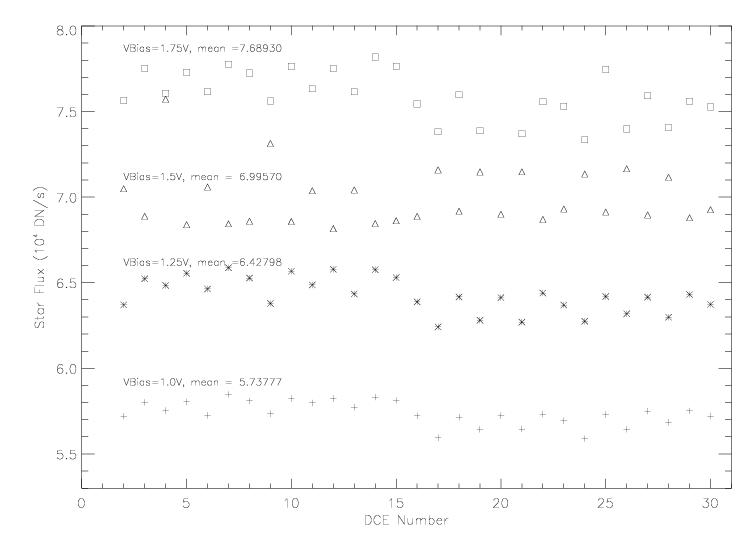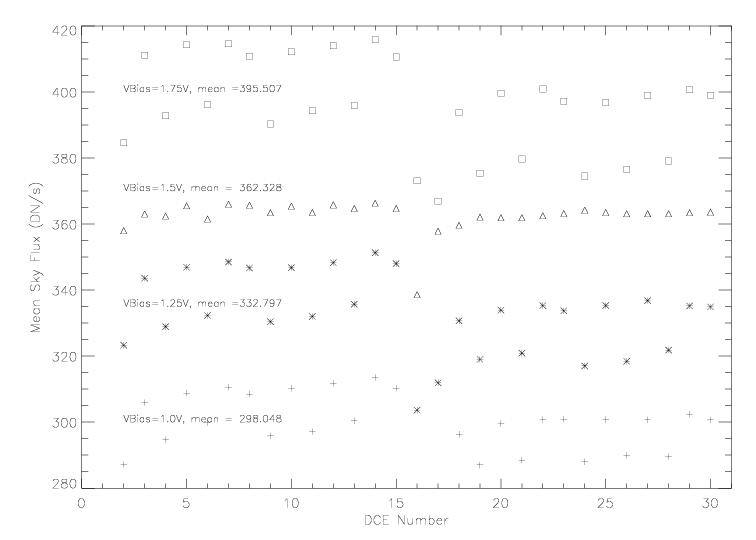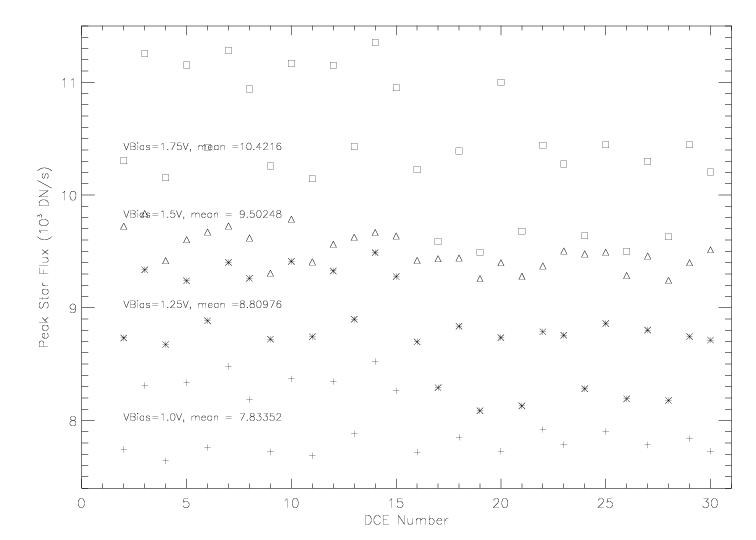
Principal:
Deputy:
Analyst:
AORKEYS:
Last Updated:
The following steps were followed in analyzing the data: 1) I used V2.41 of mips_sloper and mips_caler to reduce the data. 2) For the 35 DCE read noise data set, I ran mips_sloper with the flags -b -d -l I then ran the IDL routine get_rdnoise_new with the flags n_dce_rej=5,max_dce=35,empir_cr=4.0. This routine provided measurements of the read noise and dark current. A median filter and sigma rejection algorithm are included in the read noise program to remove cosmic rays. 3) For the standard star observations I used the following: mips_sloper -w -j CamO filename mips_caler -C CamO filename 4) I performed photometry on the standard star AOT data using the IRAF task imexamine with the following parameters: radius = 6, inner radius of sky annulus = 11, width of sky annulus = 5, center = yes, background = yes, iterations = 1 5) I plotted the total sky-subtracted star flux, the peak flux, and the sky flux as a function of DCE number for each bias voltage (see below). These plots show the well-known dependence of star flux on scan mirror position. To remove this effect, I reran mips_caler with the +m flag to make use of scan mirror position dependent flatfields. I also ran the data through mips_enhancer with the flag -dy to make distortion corrections. While the source repeatability was greatly improved, there was still a strong pattern with scan mirror position. This residual pattern appears to be caused by an inadequacy in the calibration data, and it is the greatest obstacle to determining the source repeatability at this time. Since a lot of work is required to use mips_enhancer on these data, I only performed this analysis for one of the four data sets. I will consider performing this analysis on all four data sets when better calibration data are available.
MIPS Campaign O results:
AORID Bias Voltage Dark Current(e/s) Read Noise(e) Avg # DCEs used
------ before solar storm ------
7323136 1.5 V 12.5 +/- 4.7 37.5 +/- 8.3 29.86
------ during solar storm ------
7738368 1.0 V 10.8 +/- 5.2 37.3 +/- 8.5 29.73
7738112 1.25V 13.1 +/- 6.2 50.1 +/-10.7 29.74
7737856 1.5 V 16.0 +/- 6.0 44.2 +/- 9.3 29.73
7738624 1.75V 15.8 +/- 6.2 43.4 +/- 7.9 29.74
AORID Bias Voltage Mean Star Flux Mean Sky Flux Peak Star Flux
7742208 1.0 V 57400 298 7830
7741952 1.25V 64300 333 8810
7741696 1.5 V 70000 362 9570
7742464 1.75V 76900 396 10400
Each increase in bias voltage produced roughly a 10% increase in the responsivity of the array. From the noise measurements, it appears that the dark current increased roughly 20% with each bias step. The increase in read noise is harder to judge given the high cosmic ray rate but appears to be no greater than about 8% per bias step. The overall signal-to-noise thus appears to increase slightly with bias, but the effect is fairly subtle. The source repeatability is still dominated by calibration errors. Visual inspection of the data shows no clear preference of bias voltage based on repeatability, with the repeatability expected to be better than than 1% for each of these bias voltages.
Plots of star flux, sky flux, and peak star flux vs DCE number can be found in the following plots:


